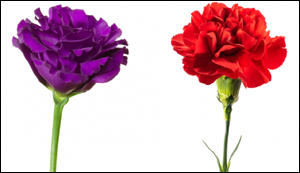New sensor could help prevent food waste
24. 3. 2020 | MIT | www.mit.edu
As flowers bloom and fruits ripen, they emit a colorless, sweet-smelling gas called ethylene. MIT chemists have now created a tiny sensor that can detect this gas in concentrations as low as 15 parts per billion, which they believe could be useful in preventing food spoilage.
The sensor, which is made from semiconducting cylinders called carbon nanotubes, could be used to monitor fruit and vegetables as they are shipped and stored, helping to reduce food waste. In addition to its natural role as a plant hormone, ethylene is also the world’s most widely manufactured organic compound and is used to manufacture products such as plastics and clothing. A detector for ethylene could also be useful for monitoring this kind of industrial ethylene manufacturing.

Researchers created a new kind of ethylene sensor that is also based on carbon nanotubes but works by an entirely different mechanism, known as Wacker oxidation. Instead of incorporating a metal such as copper that binds directly to ethylene, they used a metal catalyst called palladium that adds oxygen to ethylene during a process called oxidation.
Read more at MIT
Image Credit: Unsplash
-jk-




